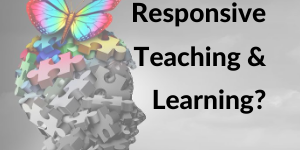Headlines both current and not-so-recent in the news have brought to light time and time again many of the struggles faced by the diverse people in our communities struggles that many of us are learning about and that many other of us already know all too well. These conversations that take over our social media from time to time are filled with buzzwords describing the nature of these struggles, one of these all too common descriptions being systemic. What are systemic inequalities?
When we look at the tragic events that unfold and subsequently pop up in our notifications, on our TV screens, in our feeds, it’s important to realize that these aren’t just random occurrences. Racist and otherwise hateful acts in our society and our community are the result of structural discrepancies in our societies—that is, these heartbreaking moments are a natural consequence of faults in the systems we have in place to be able to live our day-to-day lives.
Fighting systemic inequality, then, is a holistic effort that needs to address every part of our lives, every part of the system. Education, of course, is a huge part of our society. How do we tackle systemic inequalities and systemic racism in our education systems, then? One response is culturally responsive teaching and learning. Here are a couple of important CRT pillars.
Representative Curricula
Fostering systemic inequalities is often far from a conscious effort—this is why we label them systemic. They are part of the system, not a result of any individual effort or attempt to discriminate. A simple and enormously significant example is representation in education, or the lack thereof. For those of us that went through, or are going through, an education system in the United States, surely we can think back to our history and science classes and remember learning about the ever-important founding fathers, about quintessential scientists like Einstein, Rutherford and Bohr with their atomic model, and countless other names we have stored in our subconscious that are almost coincidentally both male and white. Do we not have stories and accomplishments by women to tell? BIPOC accomplishments? Queer stories?
Certainly, these stories and these accomplishments exist, and there are more than plenty of them. Representation isn’t only important in principle; it is paramount in responsible pedagogy. Presenting a largely or completely white male-centric curriculum implicitly pushes the narrative that accomplishments come from white men, and that accomplishments made by Black persons, colored persons, women, and non-binary or gender non-conforming individuals are second-hand and makes them feel more like trivia content than significant historical advances. When non-white, non-male accomplishments become second-hand, so do Black, colored, queer, and female dreams.
Including appropriate representation in school, curricula is an important pillar in Culturally Responsive Teaching that shows students not only the content in their textbooks but that their stories matter.
Inclusionary Engagement
Culturally Responsive Teaching practices do not stop at a diverse curriculum. Not only are the historical events we’ve been comfortably white-washing more diverse than we’ve given them credit for, our classrooms are just as—if not even more—diverse. Even a completely representative curriculum won’t reach every student equally if presented uniformly, because students’ experiences are systemically ununiform.
Bilingual first generation or otherwise immigrant students will likely not receive English instructions exactly the same as students that only speak English, students that aren’t fortunate enough to receive three or even two full meals each and every day will not process schoolwork the same way other students do, and students that have to wonder why the color of their skin makes them feel anything other than powerful are not going to get the same literary satisfaction from S.E. Hilton’s “it’s rough all over.”
Culturally Responsive Teaching doesn’t only mean representative curricula. Culturally Responsive Teaching also means getting to know your students, their pronouns, their dreams, their worries, their struggles, and their relationships with education. CRT isn’t only recognizing that each and every student matters, it’s showing it.
The Big Picture
Culturally Responsive Teaching isn’t a singular program or lesson plan, it’s a mindset and a philosophy with which to approach each and every part of your teaching in order to engage your students with authentic and rigorous learning experiences, honoring each learners’ cultural capital.
At AdaptiveX, we understand CRT very well. You can explore the free resources available here. Wondering how our Culturally Responsive PD Program can help you and your organization achieve these and other goals? You can schedule a time here.






